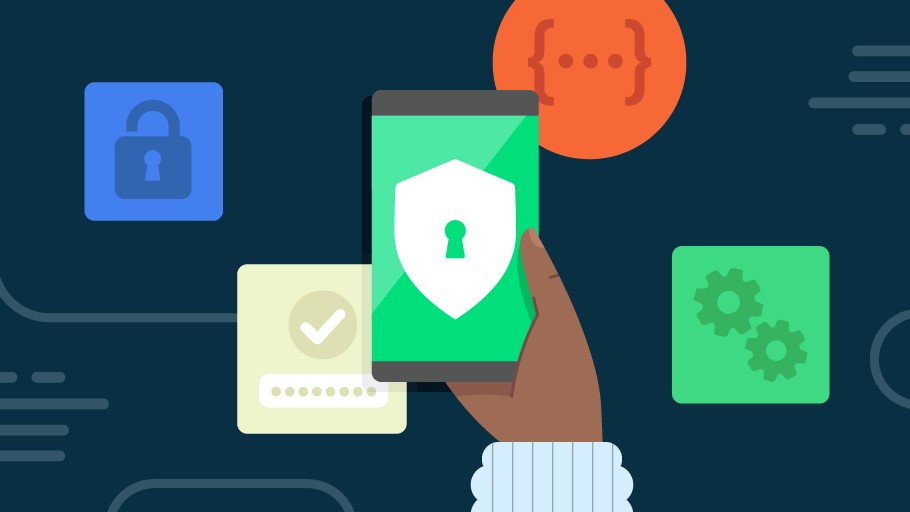These Android adware apps with over 2 million downloads put you at risk — delete them now
Malicious apps could be slowing down your phone by showing ads in the background

Despite Google’s best efforts, more than a dozen adware apps that can slow down your devices and even infect them with malware have been downloaded over 2 million times from the Play Store.
As reported by BleepingComputer, in its latest mobile threat report, the antivirus company Dr. Web has identified several trojans on the Google Play Store which belong to the FakeApp, Joker and HiddenAds malware families.
Of these adware apps, some are disguised as games while others are posing as messaging apps or utilities. Surprisingly though, some of these apps are completely fake and take unsuspecting users to casino sites.
If you have one of the best Android phones and don’t want to have your battery drained by ads running in the background or end up with a nasty malware infection, you’re going to want to uninstall all of these apps, provided you have any of them installed on your devices.
Delete these apps now
After discovering these adware apps on the Play Store, Dr. Web’s security researchers reached out to Google and they have all now been taken down. However, if any of them are installed on your smartphone, you’re going to need to manually remove them. Here are all of the adware apps in question along with how many times they’ve been downloaded from the Play Store:
HiddenAds apps:
- Super Skibydi Killer – 1,000,000 downloads
- Agent Shooter – 500,000 downloads
- Rainbow Stretch – 50,000 downloads
- Rubber Punch 3D – 500,000 downloads
FakeApp apps:
Sign up to get the BEST of Tom's Guide direct to your inbox.
Get instant access to breaking news, the hottest reviews, great deals and helpful tips.
- Eternal Maze – 50,000 downloads
- Jungle Jewels – 10,000 downloads
- Stellar Secrets – 10,000 downloads
- Fire Fruits – 10,000 downloads
- Cowboy's Frontier – 10,000 downloads
- Enchanted Elixir – 10,000 downloads
Joker apps:
- Love Emoji Messenger – 50,000 downloads
- Beauty Wallpaper HD – 1,000 downloads
Hiding in plain sight
Just like other malicious apps we’ve seen in the past, once installed on a victim’s smartphone, these adware apps use several tricks to conceal themselves. This includes replacing their icons with a Google Chrome icon or using a transparent icon image that leaves an empty space in your app drawer.
For those unfamiliar with adware apps, essentially, they secretly run in the background on your phone and use its browser to launch ads. While you won’t see these ads, they earn money for the cybercriminals behind this campaign while draining your battery and slowing down your device’s performance.
When it comes to the malware these apps use, those from the FakeApp family send unsuspecting users to investment scam sites or to fake online casino sites. Meanwhile, the adware apps which contain the Joker malware subscribe users to premium subscription services without their knowledge. Finally, the adware apps using the HiddenAds malware do exactly what the name implies, they show hidden ads on your smartphone in the background.
How to safe from adware and malicious apps

The first and easiest way to keep your devices and yourself protected from adware and malicious apps is to limit the number of apps on your phone. While you can install loads of apps even on the best cheap phones, doing so isn’t recommended as there’s a higher chance that one of them could be malicious.
Besides limiting how many apps you have installed, you should also consider using one of the best Android antivirus apps for extra protection. If you’re on a tight budget though, Google Play Protect scans both your existing apps and any new ones you download for malware. In fact, real-time scanning was recently added to Google Play Protect and now when you install a new app, Android’s built-in antivirus will recommend that you perform an app scan to check to see if an app is safe before you install it. If something dangerous is found, Google Play Protect will block the app and prevent you from installing it.
You also want to carefully review the rating, reviews and developer information of any app you install. As ratings and reviews can be faked though, it’s also a good idea to look for external reviews on other sites and video reviews can be particularly useful as they let you see the app in question in action before you decide to download it.
Adware apps and malware continue to be quite profitable for cybercriminals which is why we likely won’t see either disappear entirely anytime soon. However, if you exercise caution before installing new apps and don’t grant them unnecessary permissions, you should be safe from the threats they might pose.
More from Tom's Guide

Anthony Spadafora is the managing editor for security and home office furniture at Tom’s Guide where he covers everything from data breaches to password managers and the best way to cover your whole home or business with Wi-Fi. He also reviews standing desks, office chairs and other home office accessories with a penchant for building desk setups. Before joining the team, Anthony wrote for ITProPortal while living in Korea and later for TechRadar Pro after moving back to the US. Based in Houston, Texas, when he’s not writing Anthony can be found tinkering with PCs and game consoles, managing cables and upgrading his smart home.
